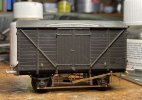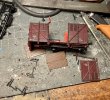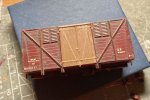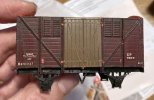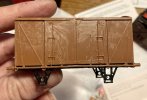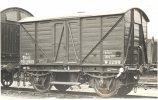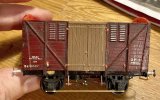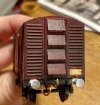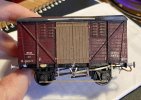AJC
Western Thunderer
Sometimes, you start a kit and reach a certain point where you wonder why. This is one of those. Fundamentally, it takes one set of mouldings for the type of Midland van that became an LMS type which became the standard (it had a 9' wheelbase) and for that it's a fair representation, and added it to another chassis moulding. That's also fin, but the body of the van in question isn't really that close.
If you take a look at the prototype image from Paul Bartlett's collections - LMS & pre-group covered goods vans VVV ZRV ZQV YVV | 13719_MR__2m_ - then you'll note that the corner brackets I've added are a bit representational, but then, so is the moulded planking and strapping. I'll need to add a lower door runner too and that's possibly a bit more than one should have to, but never mind. It will be OK, but not quite.
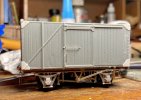
Adam
If you take a look at the prototype image from Paul Bartlett's collections - LMS & pre-group covered goods vans VVV ZRV ZQV YVV | 13719_MR__2m_ - then you'll note that the corner brackets I've added are a bit representational, but then, so is the moulded planking and strapping. I'll need to add a lower door runner too and that's possibly a bit more than one should have to, but never mind. It will be OK, but not quite.

Adam


